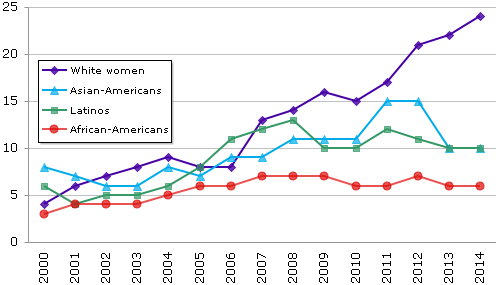A survey of female leaders around the world indicates how steep Hillary Clintons climb was.
More at the link, obviously.
I would also like to post this tidbit from an article from yesterday.
There is no one reasonno finite number of reasonswhy Hillary Clinton lost the U.S. presidential election. No amount of poring over polls will tell us the precise degree to which bias against women influenced the vote. What we do know is this: The United States still doesnt have a female leader, as it hasnt for the last 227 years. America remains outside the club of 67 nations, out of 144 surveyed countries, that have had a female prime minister, a female president, or both over the last 50 years, according to the World Economic Forums latest study on the gender gap in politics.
In many of these countries, women havent remained in power for longin some cases for just days or months. Since 1966, only 33 countries have had a female leader for four years or more. The top countries in this category are Bangladesh (with a female leader on and off for 23 of the last 50 years), India (21 years), Ireland (21 years), Iceland (20 years), and the Philippines (16 years). In sixth place is Sri Lanka, which elected the worlds first-ever female prime minister in 1960. Heres how the Pew Research Center mapped the global landscape in 2015:
But the underrepresentation of women in U.S. politics is not the only obstacle to America getting its first female president, as Farida Jalalzai, an expert on women in political leadership at Oklahoma State University, has documented. In a 2010 paper, Jalalzai noted that while more than three-quarters of all female presidents and prime ministers had come to office since 1990, spurred on by policy reforms like electoral gender quotas, these trends werent evenly distributed around the world.
Women, she found, are more likely to serve as prime ministers than as presidents, perhaps because in parliamentary systems women can bypass a potentially biased general public and be chosen by the party after working their way up its hierarchy. Very few female national leaders attained their office initially through a popular election. To win a national vote in a presidential system, women must contend more directly, and on a larger scale, with sexism and stereotypes. The more a leadership position is perceived by the public as powerful, the harder it is for women to secure itat least until a woman manages to occupy that position and challenge its association with masculinity.
Womens leadership in certain regions is largely limited to those with familial ties through marriage or blood connections to former executives or opposition leaders, many of whom were assassinated. There are compelling reasons why a woman may appear to be a more appropriate heir to political power. For example, a woman may not be seen as independently politically ambitious and therefore as easily pushed aside by male leaders after coming to office. Alternatively, because women are often viewed as unifiers of the family, they may be charged with the daunting task of uniting their country following a period of political conflict.
Consider these findings in the context of the United States. The U.S. has fewer female political leaders at the national level than many of its peers. It is a presidential system with relatively stable politics and strong institutions. It is the worlds greatest military power, and one of the worlds greatest nuclear powers. Candidates for president are seeking, through a popular vote, what is arguably the most powerful job on the planet, in the one of the largest countries on earth. It is therefore very, very hard for a woman to become president of the United States. That Hillary Clinton made it as far as she didthat she won not only her partys nomination but the popular vote, despite losing the electionis surely a testament to her perseverance and political experience. But its also a testament to her fame and last name.
Clintons unique set of attributes, and the broader anti-establishment public mood, suggest that it could be a while before the next viable female presidential candidate emerges in America. They suggest that a woman leading the United States is not, as many young voters predicted this election cycle, simply a matter of time.
Theres absolutely no reason to think that this is inevitablethat a woman is going to get this position, Jalalzai said. If that woman is not Clinton, she asked, then who? And when?
More at the link, obviously.
I would also like to post this tidbit from an article from yesterday.
Political scientists say this so-called ambition gap is because women are less likely to be encouraged or recruited to run, underestimate their own abilities, assume they need to be more qualified than men and view politics as sexist.
Now, Mrs. Clintons loss may lend credence to those doubts.
Because there was general consensus on both sides of the aisle that she was the most qualified presidential candidate weve ever seen, and she lost, it reinforces the notion that maybe its not even enough to be twice as good to get half as far, said Jennifer L. Lawless, a professor of government at American University who studies gender and political ambition.

